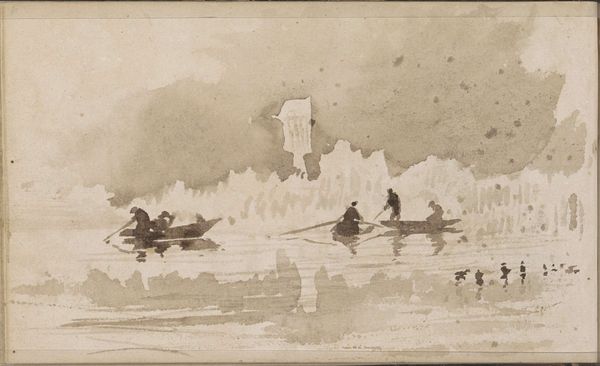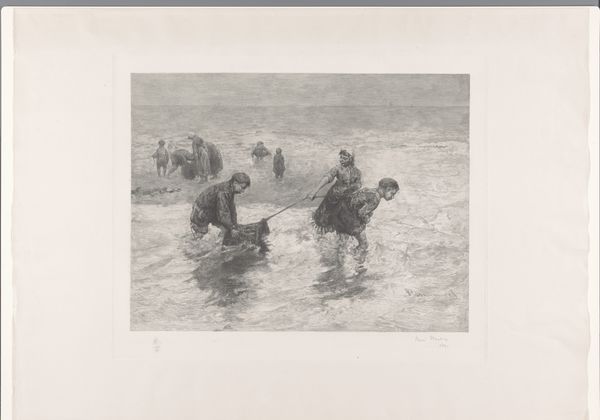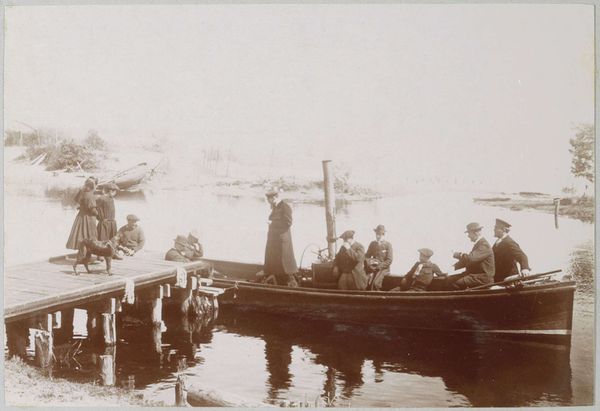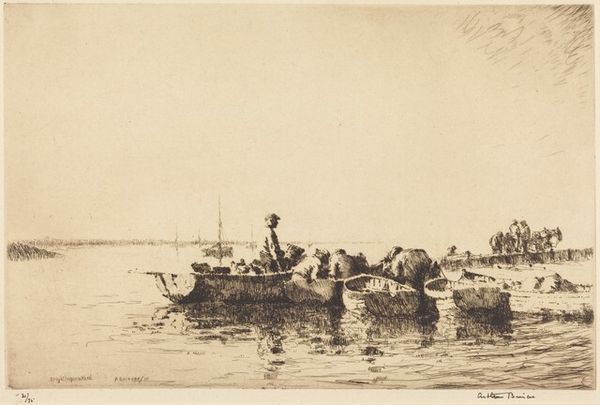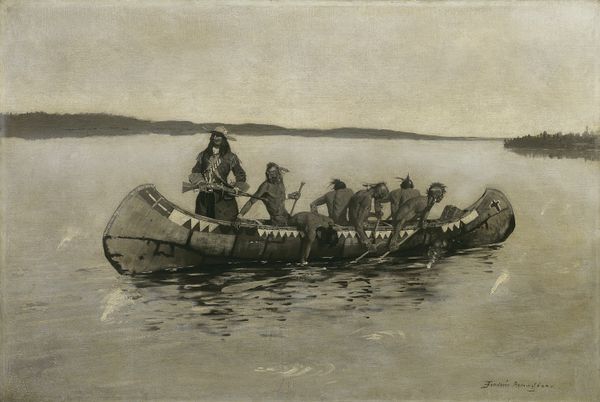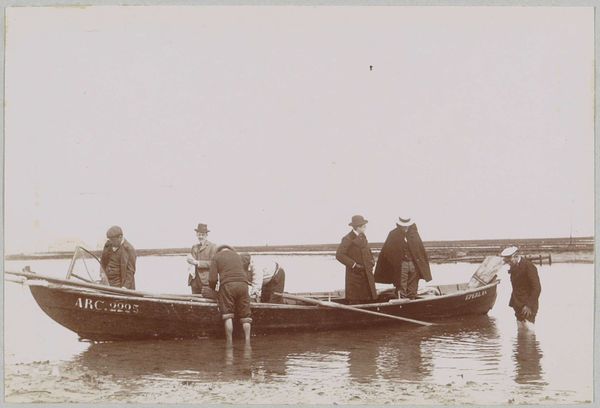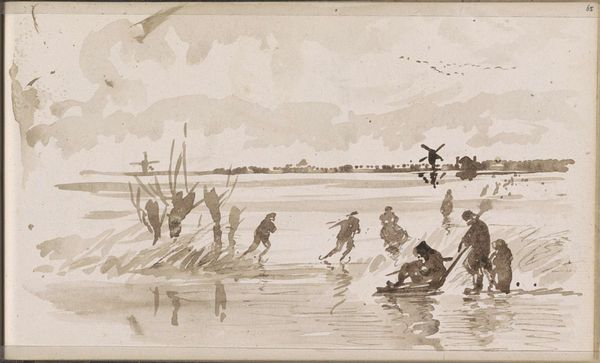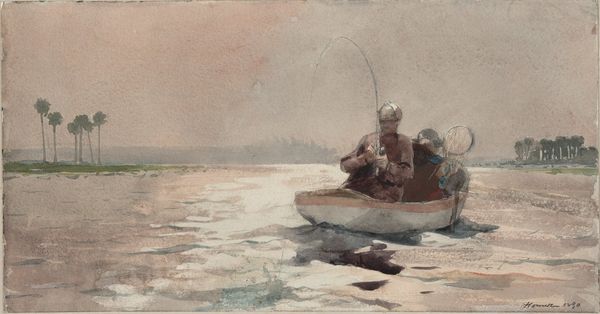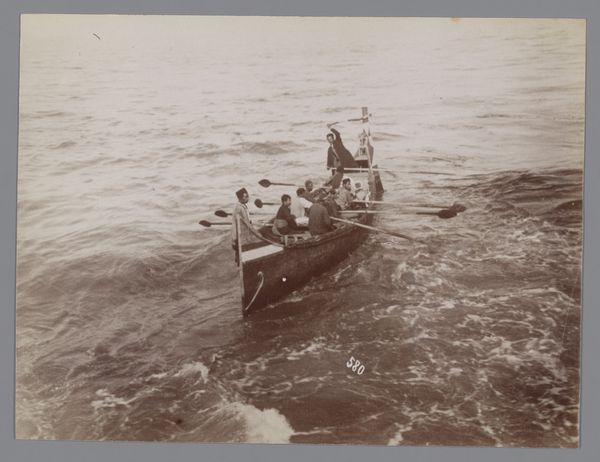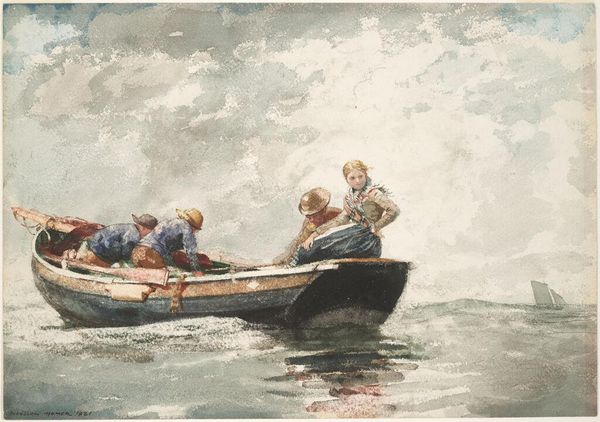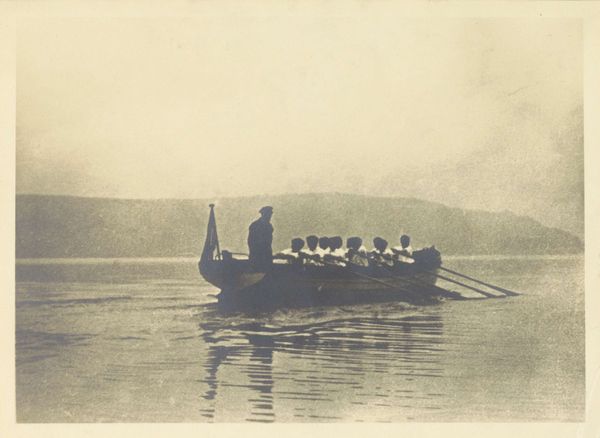
painting, watercolor
#
painting
#
impressionism
#
landscape
#
figuration
#
watercolor
#
coloured pencil
#
genre-painting
#
mixed media
#
watercolor
Copyright: Public Domain: Artvee
Curator: Looking at Winslow Homer's 1880 watercolor painting, "Four Rowboats with Children," I'm immediately struck by its airy lightness. It feels almost unfinished, more like a sketch than a completed piece. Editor: It evokes a feeling of pure, unadulterated freedom, doesn't it? These children, out on the water, they represent a detachment from societal expectations. It's as though Homer is offering a commentary on childhood as a brief escape from the structures that await them. Curator: Absolutely. The use of watercolor lends itself to this interpretation. The transparency and fluidity of the medium mirror the fleeting nature of childhood itself. And the recurring boat motif – the vessel – has been used symbolically to carry meaning related to the voyage of life, a hopeful journey perhaps, but one inherently precarious. Editor: Note how the light captures their straw hats – it feels deliberately celebratory. Straw hats have appeared in many contexts; however, Homer uses these to remind us that this is a representation of everyday, commonplace happiness in children at play. The loose brushstrokes describing their figures convey dynamism but don't concretize them – this isn't about specifics, but about universal experience. Curator: Given that this was painted just after the Civil War, one might argue this also serves as a gentle, albeit subtle, reflection of a generation seeking healing and a renewed sense of hope in America’s social fabric, particularly through its youth. We see this in a similar context when reading the works of contemporaries such as Twain. Editor: I appreciate that insight into social context. In many indigenous communities, waterways and water activity serve as cultural lifebloods, and although not necessarily overt here, one cannot disregard the deeper currents relating to human reliance on bodies of water that permeate this work. What do you find compelling about it technically? Curator: Homer's skill in capturing light and shadow with such a limited palette is masterful. The washes of blue and gray suggest the movement of water and air, almost immersing us into the scene. It speaks to a complex understanding of space that goes beyond simple representation. Editor: Agreed, there is a sense of visual shorthand present here, of distillation. Ultimately this allows viewers to access the most salient information regarding childhood experience. And from these experiences, it encourages us to seek out a greater sense of belonging with nature in our adult lives. Curator: It offers a powerful, open-ended visual statement – an accessible meditation on freedom, hope, and the delicate balance of youth and uncertainty. Editor: Precisely. An emotionally engaging painting to meditate on how art can express collective yearning in an individual’s journey.
Comments
No comments
Be the first to comment and join the conversation on the ultimate creative platform.

